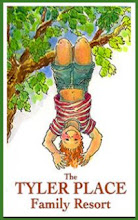By Ted Tyler
What do I recall about winter at Missisquoi Farm, the appellation of the future T.P. in the early 1940’s? Well, first of all if school was ever closed for snow days, I don’t remember it. My memory is we waded through whatever nature had to offer.

Living on Missisquoi Bay was central to the winter experience. While it took until mid winter (if even then) for the deep, main lake off Burlington to freeze, relatively shallow Missisquoi Bay, large as it is, iced over early and by Thanksgiving there could be smooth black ice skating parties around Bandstand Island. Depending on snow cover, by January the ice would be two to three feet thick, quite safe for heavy truck traffic. Why was snow cover a factor? Because it’s a great insulator and a dump of snow when the ice was still thin protected the water beneath from continuing to freeze, until high winds or the occasional thaw partially or completely removed this natural blanket.
We skated a lot. If snow covered smooth ice, we would expend considerable energy and time in shoveling ever-increasing streets, avenues and cul de sacs through it. The snow scoop was an excellent device for this purpose.
The quality of the ice depended on wind and ambient temperature. Best were the sudden steep drops of temperature to well below zero F. on a still clear night, with the stars creating all the light needed. Inches of perfectly clear black ice formed quickly and you knew the booming noises all around you weren’t something to be afraid of – just the sound of the expanding ice. In such conditions, before the next snowfall we (and by “we”, I mean family of all ages) could skate all over the Bay, into Canada or wherever the urge took us. So much more fun than rink skating – and if such a thing as artificial ice existed in those days, that was beyond our ken.
Currently the main winter activity on Missisquoi Bay – by far – is ice fishing. There are whole villages of shanties and vehicles, snowmobile and ATV traffic going and coming constantly. I don’t remember very much of that as a kid, although it existed. There was sliding and tobogganing, but not much skiing (too far from a source – only Stowe in those days within our reach). There was snow tunneling thanks to the west facing bluffs – a natural snow fence which would often pile up a 10-foot drift on the lake in front of Bluebill.
So I’ll end this initial reportage on winter activities with a little story about skating and my sister Pixley, 6+ years younger than I. Pixley wasn’t skating – or even walking – she was only a few months old. However, as someone still getting the hang of ice skates, I was using the handle at the back of Pixley’s box sleigh with curved runners as a skating support. It was one of those days previously described – smooth, beautiful ice all the way to the Canadian shoreline – some four or five miles away. There was also a fairly brisk south wind blowing. My system was to give Pixley’s sled a push and then skate up to it and repeat the process. Well, either the wind picked up or I pushed too hard – and off went Pixley’s sled to the north at a pace beyond my capabilities to match. Not a peep throughout out of Pixley, all bundled up with only her eyes in view. The various adults and teenagers within my vicinity quickly caught on to the situation and raced northward – and somewhere around the Canadian border caught up with and retrieved Pixley.
To be continued.


No comments:
Post a Comment